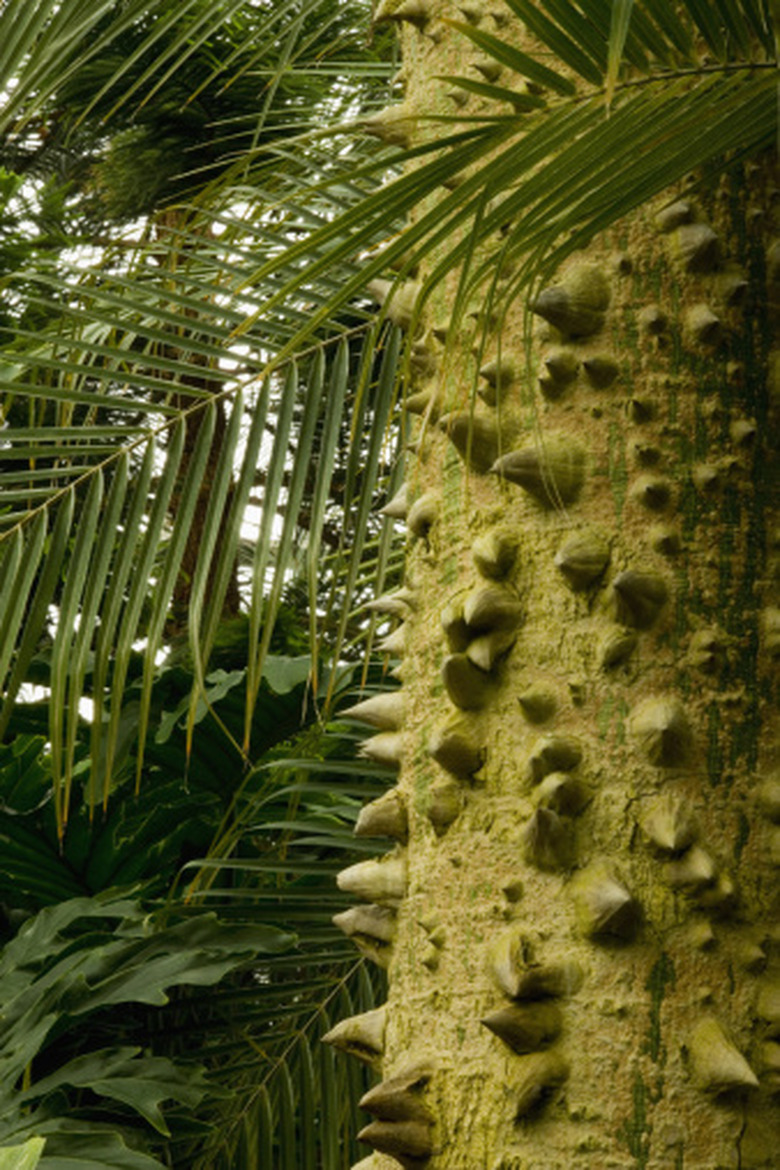What Kind Of Tree Grows Spikes?
Several species of trees grow spikes, more accurately known as spines or thorns. These can appear on different parts of the tree, depending on the variety, and are believed to have served as a defense against now-extinct giant mammals according to Bucknell University Arboretum. Spiky trees occur in many different botanical families, and are found throughout the Americas.
Silk Floss Tree
The silk floss tree (Chorisia speciosa) , found in the tropical forests of Brazil, Argentina, Paraguay and Puerto Rico, bears thick spikes along the entire length of its bulging trunk. The tree has prickly horizontal branches that flower into pink and white. These later leave seed pods containing cotton-like fibers, from which the name of the tree derives.
Honeylocust
The honeylocust (Gleditsia triacanthos) is a deciduous tree found across the continental United States, particularly in the lower Midwest. Named for the sweet-flavored pulp of its seed pods, the honeylocust's trunk is covered in clusters of long thorns that change color from green to red to gray as they age.
- Several species of trees grow spikes, more accurately known as spines or thorns.
- The silk floss tree (Chorisia speciosa) , found in the tropical forests of Brazil, Argentina, Paraguay and Puerto Rico, bears thick spikes along the entire length of its bulging trunk.
Hercules' Club
The Hercules' club (Zanthoxylum clava-herculis) is a species of tree that is actually named after its spiky trunk. This tree grows in the southern United States, and bears short, thick spines and leathery leaves. Native Americans used the tree as a cure for the toothache, since chewing on its leaves was found to cause numbness in the mouth.
Guinea Bactris
The Guinea bactris (Aiphanes minima) is a spiny palm that grows throughout the Caribbean, found in Puerto Rico, the Dominican Republic, Barbados and Granada. Its thin trunk is covered in needle-like spikes, which also sometimes occur on the underside of the leaves. The palm has a round, red fruit that has an edible seed.
